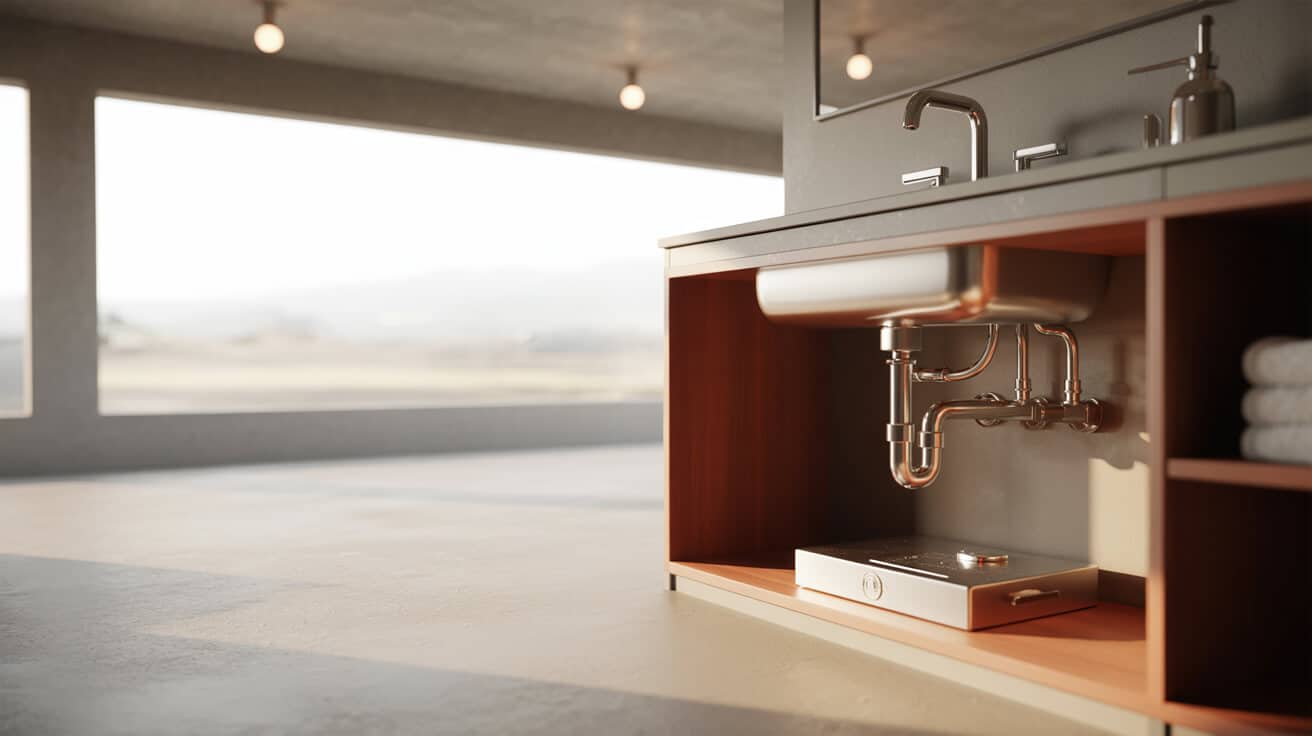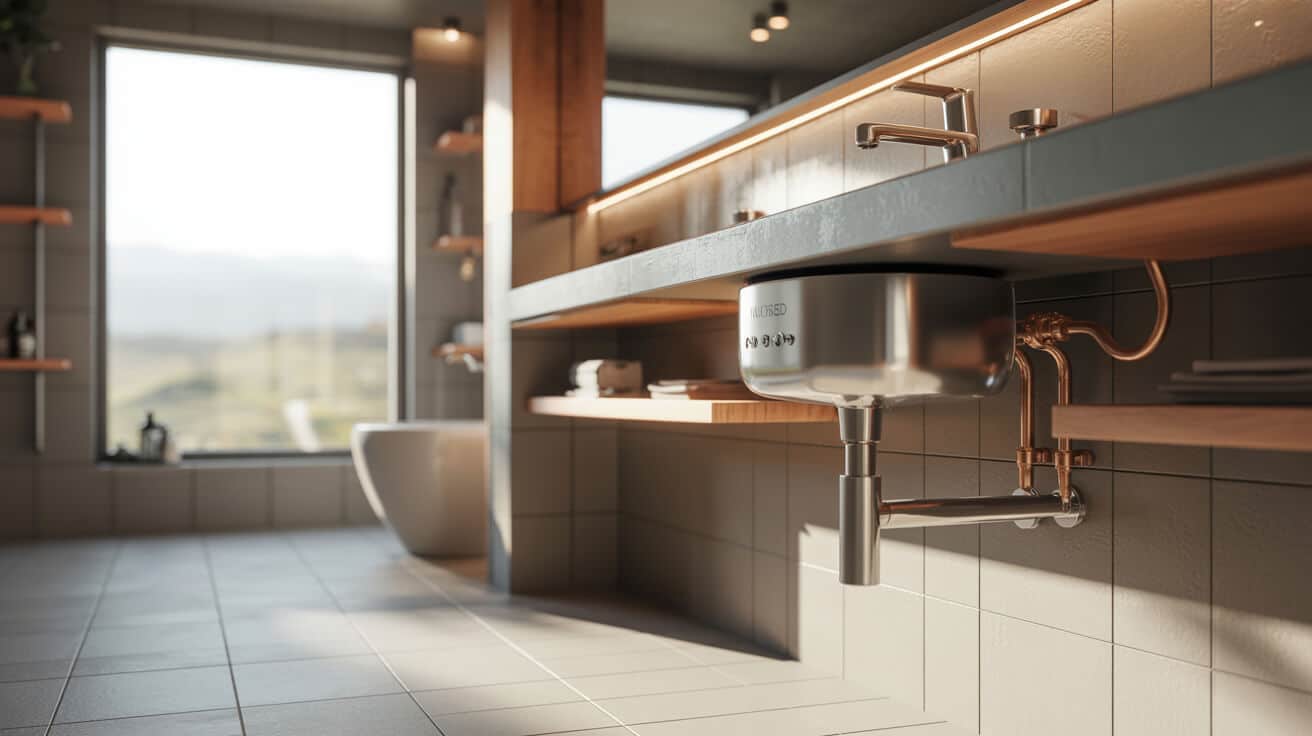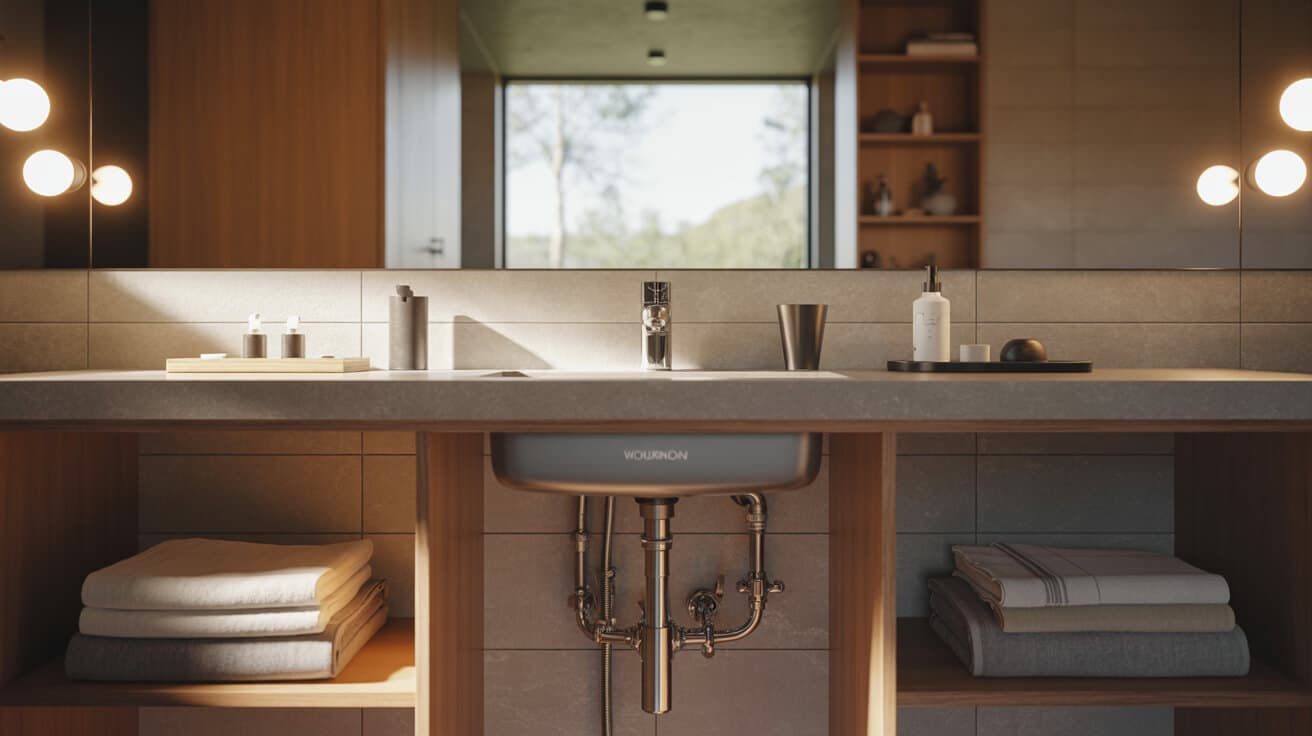Point of use water heaters have altered the landscape of water delivery, addressing issues ranging from wasted time and water to building design constraints and financial operating pressures. These systems enable rapid adaptation—serving urgent needs at remote or secondary sinks, supporting property upgrades, and elevating compliance where main system capabilities fall short. Their reach encompasses domestic, commercial, and institutional sectors, offering practical answers to questions of convenience, resource conservation, and legal safety obligations. Providers such as Plumbers 4U leverage point of use devices to personalise solutions for your property, balancing technology, regulations, and your unique requirements.
Etymology or name origin
The label “point of use” stems from practical engineering and trade language, delineating appliances intended for deployment at or immediately adjacent to the water outlet in question. This nomenclature distinguishes such heaters from centralised or looped distribution architectures, placing primacy on immediacy and efficiency. Over time, the integration of pressure vessel science, electrical insulation, and miniaturised heating technology refined the term to signify an application-focused device, responding to spatial and regulatory shifts in plumbing and construction.
Overview / context
Shift from centralization to decentralisation
Conventional water heating infrastructure, often rooted in bulk storage or combi boiler installations, inevitably compounds losses through lengthy distribution pipework. Point of use heaters disrupt this paradigm, preserving thermal energy by minimising distance between the heat source and end-use fixture. Such units excel in contexts where distribution runs are unfeasible, renovation budgets are constrained, or compliance with specific water temperature mandates is non-negotiable for your business or property.
Contemporary demand drivers
The acceleration of mixed-use developments, tenant turnover, and accessibility mandates in public and private properties has raised new operational questions. Building managers, landlords, and facility heads often encounter circumstances where central systems underdeliver due to low occupancy, fluctuating demand, or architectural limitations. Installation of a point of use water heater addresses efficiency gaps while supporting future retrofits or property enhancements with minimal upheaval.
Role in your home, portfolio, or organisation
For your company or property, point of use water heaters furnish an adaptable option, capable of supporting compliance, reducing utility costs, and enhancing day-to-day experience where rapid access to hot water is a recurrent concern.
History
Technical origins
The earliest point of use heating technologies surfaced in the first half of the twentieth century, as engineers sought to resolve inefficiencies in large-scale plumbing networks. Metal-sheathed electrical resistance elements married with pressure-tested tanks provided foundational solutions in both commercial and domestic contexts.
Market emergence
As urban development intensified postwar, adoption of localised heaters accelerated in apartments, offices, and public facilities. New materials, including improved corrosion-resistant metals and advanced plastics, opened the possibility for smaller, safer, and lower-maintenance units.
Regulatory and product evolution
Late twentieth-century standards, such as WRAS (Water Regulations Advisory Scheme) certification in the United Kingdom and minimum energy efficiency ratings (ErP or SEDBUK), further shaped the product space. Mandatory anti-scald technology, insulation performance thresholds, and installer certification requirements fundamentally altered the design, market, and perception of point of use water heating.
Digital and low-loss innovation
A new era dawned with the integration of digital thermostats, maintenance-free anodes, and self-diagnostic electronics. Today, many providers including Plumbers 4U specify and instal only models meeting the latest eco-labelling and safety benchmarks, ensuring your system remains future-compliant and cost-effective.

Concept / description
Operation principles
Point of use water heaters function by rapidly heating a constrained volume of water in real time or maintaining a compact hot reservoir ready for immediate draw-off. The tankless models employ flow-activated electrical or gas burners, delivering variable energy input to precisely match demand. Storage options, by contrast, utilise high-efficiency insulation to hold a limited amount of near-instant hot water at the desired temperature.
Components and mechanisms
A typical unit consists of:
- Heating element or burner: Converts electricity or fuel to heat, shaped for rapid thermal response and durability.
- Thermostat and sensing controls: Maintain temperature, enable anti-scald settings, and initiate safety shut-offs.
- Pressure and relief apparatus: Manage fluctuations in water pressure, guard against overpressure, and bleed excess safely.
- Expansion vessel and non-return valves: Regulate system volume, prevent backflow, and support compliance with UK Water Supply Regulations.
- Installation fixtures: Mounting brackets, pipe adapters, electrical connections, and necessary thermal insulation.
Mounting and spatial considerations
Choosing between under-sink, wall, or exposed above-basin models involves trade-offs in aesthetics, accessibility, and regulatory checks. Pressure requirements, electrical loads, and planned fixture use influence device selection.
Functionality / purpose / applications
Home environments
Your home may benefit from a point of use water heater at utility sinks, garage or garden rooms, or remote bathrooms, where central boiler systems or hot water tanks fail to provide immediate comfort. The avoidance of cold water “dead leg” delays saves both time and resources.
Commercial and institutional facilities
Employers, landlords, and facilities managers have adopted localised heating for hygiene-critical washrooms in office suites, food service hand stations, clinics, and educational venues. Regulatory guidance—often stipulating minimum delivery temperatures or anti-scald protection—makes correct deployment non-optional.
Retrofit, renovation, and compliance scenarios
Older properties, properties with limited pipe access, and developments under tight occupancy control frequently require bespoke water heating solutions. For your rental or managed asset, point of use water heaters affix compliance (such as G3 unvented cylinder safety, TMV anti-scald technology, or energy labelling) to rapid, cost-contained installation.
Custom use cases
Settings including modular buildings, mobile catering units, and temporary accommodations also propagate demand for devices engineered for resilience, portability, and narrow service requirements.
Classifications / types / variants
By heat delivery technique
- Instantaneous (tankless): Prioritise unlimited flow (up to power rating) for low-demand but frequent-use environments.
- Storage (mini-tank): Offer small capacity (commonly 5–15 litres) for higher draw-off or low flow rates typical of handwashing, dishwashing, or cleaning.
By fuel supply
- Electric: Dominate domestic and small-scale commercial settings due to simplicity and reduced instal cost.
- Gas: Reserved for high-demand or remote installations, adding complexity and requiring specialist certification.
- Hybrid/solar: Niche products, typically specified for green retrofits or off-grid assets.
By mounting system
- Under-sink: Installed within cabinetry, nearly invisible, suitable for kitchens and bathrooms.
- Over-sink/wall-mounted: Positioned for easy maintenance, often in industrial, retail, or communal settings.
- Floor-standing: Large commercial units sited for service access, redundancy, and durability.
Pressure and feed compatibility
- Vented: Suited for gravity-fed, low-pressure properties; feature specialised taps/spouts to regulate outflow.
- Unvented (mains pressure): Standard in modern plumbing for direct connection to high-pressure supply, subject to compliance (expansion, check valve, and discharge kit requirements).
Regulatory, safety, and application variants
- Anti-scald certified (TMV2/3), WRAS approved, G3 compliant (for unvented >15L), energy efficiency labelled (ErP/SEDBUK).
Systems / tools / methodologies
Installation sequence and professional best practice
Installation typically involves:
- Assessing site plumbing configuration, and electrical capacity (fused spur or separate breaker for electric models).
- Selecting compatible mounting (considering height, space, servicing access).
- Preparing pipework and fitting isolation or anti-backflow devices.
- Connecting expansion kits or pressure relief drains for unvented systems.
- Wiring to national electrical codes, ensuring correct earthing.
- commissioning: running the system, checking setpoints, inspecting all seals, and verifying for leaks, tripping, or operational lag.
Tooling
Plumbing professionals rely on:
- Adjustable spanners, immersion wrenches
- Electrical multimeters and insulation testers
- Pipe cutters, compression fitters
- Pipe lagging and thermal wraps
- Test plugs, pressure gauges
Sizing and specification
Accurately sizing a point of use heater involves calculation of expected flow rate (litres/minute), desired temperature rise (∆T), supply characteristics (inlet temperature, maximum pressure), and frequency of use. Failure to specify adequately risks operating frustration, device stress, or non-compliance.
Maintenance and diagnostics
Maintenance comprises:
- Scheduled descale (where applicable)
- Expansion vessel or anode checks (for storage types)
- Periodic safety discharge testing
- Digital fault code reading and reset
- Visual inspection of seals/joints for leaks

Stakeholders / entities involved
Role-specific engagement
- Homeowners: —Prioritise comfort, resource savings, discreet design, and installation simplicity.
- Tenants/Landlords: —Emphasis on maintenance assurance, warranty transferability, and compliance documentation (for insurance and rental certification).
- Property managers/Facilities professionals: —Seek reliable, easily serviced installations with traceable paperwork and rapid repair.
- Installers/Engineers: —Focus on compliance (G3, WRAS, Part P), documentation, and technical support.
- Manufacturers: —Define feature sets, compatibility, standards compliance, and offer post-installation service guidance.
- Regulatory authorities: —Audit instal practice, enforce compliance, provide guidance on emerging legal requirements impacting water, energy, and safety.
Table: Stakeholder relationships and concerns
| Stakeholder | Key Concerns | Typical Actions |
|---|---|---|
| Homeowner | Immediate comfort, efficiency | Select convenience-oriented units |
| Landlord | Liability, compliance | Maintain documentation, schedule SVC |
| Facilities Manager | Uptime, standardisation | Opt for easy-maintenance models |
| Installer | Compliance, minimal callbacks | Specify and log instal per code |
| Manufacturer | Warranty coverage, brand reputation | Support service, certification |
Legal / regulatory / ethical considerations
Regulatory frameworks and compliance
- UK Building Regulations: Part G (sanitation, anti-scald controls), Part P (electrical safety—installations verified by qualified personnel), G3 (unvented cylinder requirements—instal certification, safety discharge, expansion provision).
- Product and installation standards: WRAS (water safety), ErP/SEDBUK (energy), TMV2 (anti-scald for dwellings), TMV3 (public buildings, care environments).
- Warranty and insurance: Registering the instal with the manufacturer, maintaining service logs, and retaining compliance certificates is essential for warranty and insurance validation.
- Ethics/environment: Ethical best practice involves minimising water and energy waste, supporting vulnerable users (anti-scald, legionella prevention), and specifying upgradable or recyclable products.
Documentation
Landlords, property managers, and facilities directors must retain proof of certified installation and regular maintenance to meet tenant law, building codes, and insurance liability requirements. Companies such as Plumbers 4U typically support you through documentation, warranty registration, and compliance tracking.
Performance metrics / data / measurements
Specification benchmarks
- Efficiency: Measured in energy input (kW), output (temperature rise), and standby losses (for storage types).
- Flow rates: Expressed as maximum litres per minute at defined temperature rise.
- Pressure operation: Minimum and maximum allowable supply values (e.g., 0.5–6 bar).
- Temperature:
- Maximum delivery (to comply with scald-prevention)
- Setpoint/adjustability
- Service life: Typical warranties range 2–5 years; lifespan varies with maintenance intervals and water hardness.
Sample performance comparison table
| Parameter | Instantaneous | Storage (Mini-Tank) |
|---|---|---|
| Typical Power (kW) | 3–12 | 1–3 |
| Flow Rate (l/min) | 2–6 | N/A (storage volume) |
| Capacity (litres) | None | 5–15 |
| Standby Loss | None | Yes (rate varies) |
| Application | Handwash, rinse | Repeat short draws |
Challenges / barriers / limitations
Technical
- Limescale build-up: Affects heating efficiency and lifespan, particularly in hard water districts—requiring scheduled descale.
- Electrical supply: High-wattage models may demand new circuits, earth upgrades, or fuseboard expansion.
- Pressure integration: Mains pressure units require managed expansion and compliant discharge—incorrect instal is a compliance breach.
Operational
- Service coverage: Inadequate sizing or misplaced units can result in insufficient comfort or increased maintenance.
- Legacy/retrofit: Restricted access, space constraints, or conservation regulations may impede instal.
- Cost factors: Upfront expenditure for parts and instal may outweigh long-term savings in low-use settings.
Social/Economic/Regulatory
- Documentation and accountability: Failure to maintain compliant installation or service logs exposes you to legal or insurance risk.
- Tenant churn: Frequent change of occupants can strain maintenance schedules and increase instances of misuse.
- Regulatory drift: Adapting to ever-stricter codes for safety and efficiency challenges legacy assets and calls for continuous professional updating.
Impact / influence / legacy
Sectoral shifts
Point of use water heaters have enabled design freedom in both domestic and commercial contexts, making possible open-plan architecture, remote workspaces, and rapid property turnover without compromising service. The sectoral move toward decentralised, personalised utilities has forced upgrades in property management and installer certification, with providers like Plumbers 4U prioritising training and system optimization for your needs.
Environmental and compliance impact
Mandatory efficiency and water savings policies have transformed both how devices are specified and how success is measured—emphasising traceable, repairable, and upgrade-ready appliances. User demand for comfort, reliability, and responsive service continuously elevates product and service standards.
Future directions, cultural relevance, and design discourse
Technical and market innovation
Emerging trends suggest further miniaturisation, non-invasive metering, and touch-free or programmable controls for public health and personal comfort. As anti-scald, anti-legionella, and eco-labelling requirements intensify, future point of use water heaters will be expected to deliver personalised comfort with ever-reduced environmental impact.
Regulatory and design priorities
Rising expectations around hygiene, inclusivity, and flexibility will drive change in policy, architectural planning, and brand offerings. Your organisation will require stronger integration between property records, installer credentials, and real-time system monitoring—to ensure every user trusts and benefits from the device.
Table: Anticipated trends and implications
| Trend | Impact on Stakeholders |
|---|---|
| Smart/digital controls | Tailored temperature, efficiency targets |
| Stricter regulation | Increase in qualified instal, record-keeping |
| Eco-material requirements | Design for recycling, lower carbon |
| Accelerated adoption in care | Universal anti-scald, quick-maintenance |
| Cultural typification | Expectation of “instant” access everywhere |

